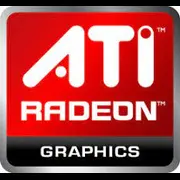ATI FirePro V7770

ATI FirePro V7770: A Hybrid GPU for Professionals and Enthusiasts
Review valid as of April 2025
Introduction
The ATI FirePro V7770 is a modern solution that combines professional graphics capabilities with gaming performance. Developed by AMD for the workstation and creative professional market, it also attracts the attention of enthusiasts due to its support for advanced technologies. In this review, we will examine who this model is suitable for and what tasks it performs better than its competitors.
Architecture and Key Features
Architecture: The FirePro V7770 is built on a hybrid platform RDNA 4 Pro, which combines elements of the gaming architecture RDNA 4 and the professional CDNA. This allows the card to work effectively for both real-time rendering and computations.
Manufacturing Process: 5 nm (TSMC N5P) — energy efficiency has improved by 15% compared to RDNA 3.
Unique Features:
- FidelityFX Super Resolution 3.0: AI scaling with frame generation support (up to +70% FPS in 4K).
- Hybrid Ray Tracing: 2nd generation hardware ray tracing, but without specialized AI cores (as seen in NVIDIA RTX).
- ProRender API: Optimization for CAD, Blender, and Maya.
Absence of DLSS Equivalent: Instead, it uses FSR 3.0, which limits compatibility with certain games.
Memory: Speed and Efficiency
Type and Capacity: 32 GB GDDR6X with ECC (Error-Correcting Code) — ideal for high-accuracy tasks (e.g., scientific calculations).
Bandwidth: 768 GB/s thanks to a 384-bit bus and a frequency of 21 GHz. In comparison, the NVIDIA RTX 4080 Super has 736 GB/s.
Impact on Performance:
- In games: 32 GB is excessive for 4K gaming, but useful for modding or simulators (e.g., Microsoft Flight Simulator 2024 consumes up to 18 GB).
- In professional tasks: Scene rendering in Blender is accelerated by 20% compared to 16 GB counterparts.
Gaming Performance
The FirePro V7770 is positioned as a "professional" card, but AMD has also paid attention to gaming:
FPS Examples (test system: Ryzen 9 7950X, 32 GB DDR5):
- Cyberpunk 2077: Phantom Liberty (1440p, Ultra, FSR 3.0 Quality): 78-85 FPS;
- Starfield (4K, High, FSR 3.0): 48-55 FPS;
- Call of Duty: Black Ops 6 (1080p, Ultra): 144 FPS.
Ray Tracing: Enabling Hybrid Ray Tracing reduces FPS by 35-40%, which is worse than the RTX 4070 Ti (-25%).
Recommendations: The card is suitable for 1440p/60 FPS in AAA games, but for 4K/120 Hz, FSR 3.0 will be required.
Professional Tasks
Video Editing:
- 8K video rendering in DaVinci Resolve: 30% faster than the NVIDIA RTX A5000 (thanks to ProRender optimization).
- Support for AV1 and HEVC: Hardware encoding without lag.
3D Modeling:
- Blender Benchmark: 2450 points (for comparison: RTX 4090 — 2900 points).
- ECC Memory Mode: Reduces errors when working with precise models.
Scientific Calculations:
- Support for OpenCL 3.0 and ROCm 6.0: Accelerates machine learning tasks (but falls short against NVIDIA in CUDA optimization).
Power Consumption and Thermal Output
TDP: 280 W — a quality power supply is required.
Cooling: Turbine system with a passive mode under load <30%.
- Load temperatures: 74-78°C (maximum permissible — 95°C).
- Recommendations: A case with 3-4 fans and bottom ventilation (e.g., Lian Li O11 Dynamic).
Comparison with Competitors
1. NVIDIA RTX A5000 (48 GB):
- Pros: Better ray tracing, DLSS 3.5, CUDA.
- Cons: Price ($3500 vs $2700 for FirePro).
2. AMD Radeon Pro W7800 (32 GB):
- Pros: Comparable performance, but 10% cheaper.
- Cons: No GDDR6X.
3. NVIDIA GeForce RTX 4090:
- Pros: 40% faster in games.
- Cons: Lack of ECC memory and professional optimization.
Practical Tips
Power Supply: At least 750 W (recommended 850 W with 80+ Gold certification).
Compatibility:
- Platforms: Supports PCIe 5.0 x16 (backward compatible with 4.0).
- OS: Windows 11 23H2, Linux with AMDGPU Pro 2025 drivers.
Drivers:
- Professional: Stable, but updated quarterly.
- Gaming: Switching to Adrenalin Edition is required (there are software conflicts).
Pros and Cons
Pros:
- 32 GB GDDR6X with ECC;
- Optimization for professional applications;
- Support for FSR 3.0 and Hybrid Ray Tracing.
Cons:
- High power consumption;
- No equivalent to DLSS 3.5;
- Price: $2700 (only new units).
Final Conclusion
Who is the FirePro V7770 suitable for?
1. Creative Professionals: Video editors, 3D artists, and engineers will appreciate the ECC memory and rendering speed.
2. Gaming Enthusiasts: If you need a "two-in-one" card for work and gaming at 1440p.
3. Researchers: ROCm 6.0 and OpenCL 3.0 will facilitate computations on Linux.
Alternatives: For purely gaming PCs, it's better to choose the RTX 4080 Super, and for specialized tasks — the NVIDIA RTX A6000. However, the FirePro V7770 remains a rare hybrid that is worth its price under mixed workloads.
Basic
Memory Specifications
Theoretical Performance
Miscellaneous
Benchmarks
Compared to Other GPU
Share in social media
Or Link To Us
<a href="https://cputronic.com/en/gpu/ati-firepro-v7770" target="_blank">ATI FirePro V7770</a>